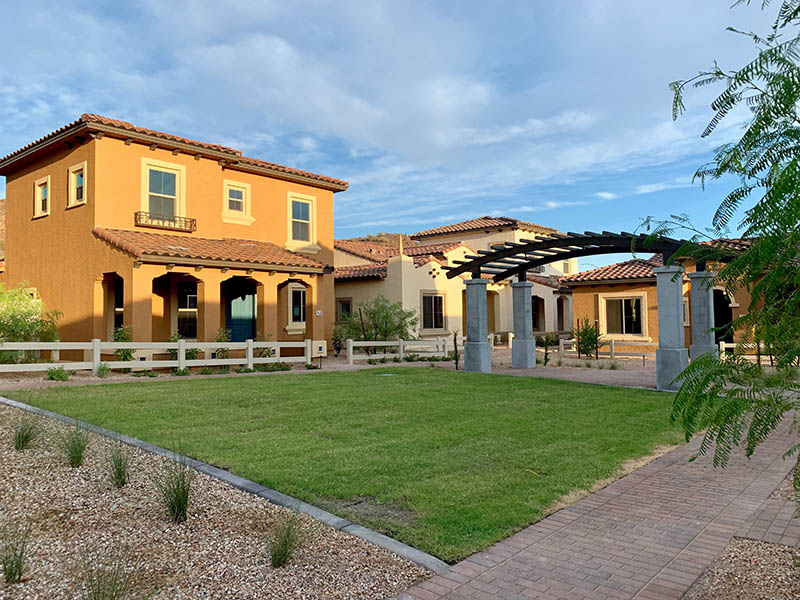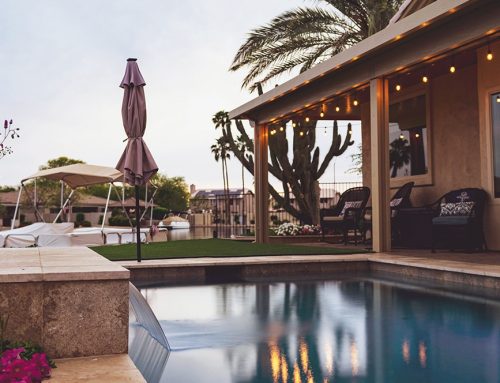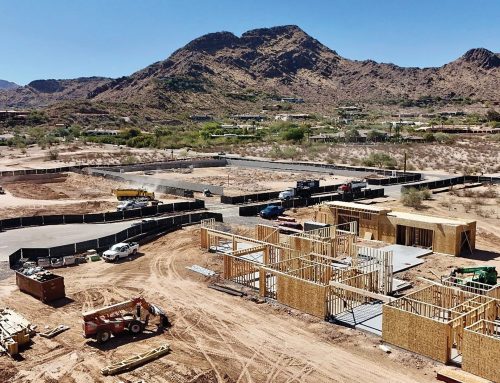By Molly Cerreta Smith
Phase One of Luna Azul Community opened in October of last year, but this beautiful utopian pocket neighborhood is one man’s dream 10 years in the making. Mark Roth, founder and project developer of Luna Azul, and his wife initially began dreaming of a future home for their daughter, who has a rare disability.
Roth, a practicing attorney with a successful 30-plus year career switched gears and began focusing on how his daughter’s future would look once she left the comfort and safety of her home when she became an adult. “We looked at the choices that existed and realized that there really weren’t any that provided what we wanted for our daughter. From the planning, security, construction, technology… it just didn’t exist.” So, Roth decided to create it. “We started with the idea of what it would look like if we could build anything for her,” he says.
Roth says that he chose the location because it was central to all areas around the valley, as well as in proximity to many of the vocational services, volunteer opportunities, social activities and entertainment that are so important to this community. “We wanted to offer easy access for families to be able to come and visit anytime. We didn’t want to be too far out in any one area of the valley,” says Roth. “We wanted it to be close to the freeway and close to the services our residents need. It all came together for us there — it seemed ideal to us.”
Luna Azul is what is being called a ‘pocket neighborhood.’ Roth, who grew up in Phoenix then moved to Seattle, found this type of community in the Pacific Northwest. These communities, designed by famed architect Ross Chapin, are defined by their cottage-size homes, large front porch/patios and homes that are built around a central area — such as a common green space — and that face one another. “This type of neighborhood is built to encourage a sense of responsibility for the community’s shared spaces and to encourage socialization among residents.”
Another important element of this 30-home pocket neighborhood is that it allows residents to live independently, with a family member or caregiver and to be in charge of their own caring services. “With most group-housing scenarios, the care is bundled. However, we were very deliberate about not offering caregivers on staff,” says Roth. “We didn’t want our residents to feel married to their caregivers or ever feel the need or desire to move if they weren’t happy with the services. Each resident and their families are in charge of bringing in the services they want or need. This was very important to us and we’re not aware of another solution like this in the country.”
That said, Luna Azul provides a number of amenities that provide peace of mind for residents and their families alike, including gated entry into the community, as well as pre-wiring in each home to provide for the most up-to-date technologies including smart door locks, outlets, alarms, sensors, light and noise control, internet-based controls that can be managed remotely and more. This is another way that allows family members to be involved as much as they want or need to be. “We are exploring how we can add more technology to ensure the families are involved,” he adds.
In addition to allowing families and caregivers access, they are always welcome to the community as part of the welcoming environment that Roth intends to create at Luna Azul. “We wanted to create a neighborhood where people with disabilities is the norm, but we also don’t want to isolate them,” says Roth. “The primary force was to create an environment where our daughter could develop friendships and have a social life. I want her to be included in activities and life in a place where people know her, where people are looking out for one another and where disability is expected.”
With that in mind, the 2,500-square foot community clubhouse serves as a hub of the neighborhood with regular activities and even events where the surrounding neighborhoods are invited to join.
“We want the surrounding neighborhoods to be included and families to feel welcome. We were very careful not to build an institution. We’ve built a first-class resort-style community, designed specifically for people with disabilities,” says Roth. “With residents now living there, we’re seeing the Luna Azul concept work, even to the point where some residents are flourishing beyond their parents’ expectations and their need for in-home care is less than was originally planned, confirming all my expectations of how impactful friendship and inclusiveness is on our lives.”
The 4.5-acre development has its own Community Association, which provides heightened attention through 24/7 on-site monitoring by a team of Community Coordinators who also organize a full calendar of social activities for residents and their guests — and encourage residents to come and join the fun. “We literally have people knocking on the door and encouraging people to participate. Our staff is intended to help the community and be highly engaged with the residents. They can also be contacted 24 hours a day, seven days a week if the electricity goes out or if say my daughter calls me and says someone is in the backyard, there is someone on staff who can go over and check it out.”
The 1,100- to 2,000-square-foot, two- and three-bedroom homes at Luna Azul range from the low $400s to the high $500s and have incorporated a wide range of features that can be customized to address and accommodate the varying needs of individuals with intellectual, developmental and acquired disabilities.
These features include highly durable flooring and finishes chosen for longevity and ease of care; low-maintenance bath and kitchen counters without grout lines for ease of cleaning; wide doorways and hallways for accessibility; large private front porches surrounding lush courtyards that encourage social engagement among the residents; in-home spaces that help minimize sensory overload and mitigate social challenges as well as CAT6 pre-wiring for an extensive range of Smart Technology safety, energy and control options.
Construction of the second phase of 16 new homes is expected to begin in early 2020, with completion of the full development slated for fall 2020.
When asked if Roth anticipates building more neighborhoods like Luna Azul around the valley or the state, he says, “It’s a huge undertaking and currently all my attention is focused on this neighborhood.” But he adds, “I would love to. It would do my heart a lot of good to just do this.”
For more about Luna Azul, visit www.lunaphx.com.





